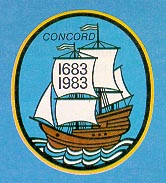|
|
|
 |
|
|
Germans in America > German Americans |
|
The achievements and contributions of German-Americans have had a profound effect on making the United States the country it is today. Famous for their practical skills, thrift, hard work, interest in the arts, and enjoyment of good living they have left their mark indelibly on American culture and life. Only a few can be mentioned among the many who have played a special part in creating the German-American legacy. German-Americans helped win and transmit the freedoms Americans enjoy today. The first great victory for freedom of the press in America occurred in 1735 when a jury found John Peter Zenger, a German-American printer and journalist, justified in criticizing the colonial government. A Philadelphia German- language newspaper was the first to report the Declaration of Independence. General Friedrich Wilhelm von Steuben, a Prussian military officer, turned Washington's civilian soldiers into a disciplined force capable of defeating the British. Notable among many German-Americans who have shaped our military to meet later challenges were John J. Pershing, whose ancestral family name was Pfoerschin, and Dwight D. Eisenhower, a descendant of Hans Nikolas Eisenhauer. "Ike" also shared with Herbert Hoover the distinction of being one of the two Presidents of German descent. Pennsylvania-German-built Conestoga wagons carried the pioneers westward, some armed with "Kentucky rifles," also made in Pennsylvania by Germans. A leading German-American wagon builder, Clement Studebaker, later produced the popular car that bore his name. In tribute to all of these -- the great, near-great, and "common folk" alike -- the Congress, by joint resolution and the President by proclamation joined in declaring 1983 the "Tricentennial Anniversary Year of German Settlement in America." Congress noted "the immeasurable ... contributions to this country by millions of German immigrants over the past three centuries." |
||
| Texts
are abridged from U.S. State Department IIP
publications and other U.S. government materials. |
||
| What
kind of information materials are available?
CD: These documents are available in fulltext format on the About the USA CD-ROM. Teachers: Request a copy for classroom use. L: Selected documents are available in German as well as other languages, including Arabic, Chinese, French, Spanish, Persian and Turkish. |
DISCLAIMER
Any reference obtained from this server to a specific commercial product, process, or service does not constitute or imply an endorsement by the United States Government of the product, process, or service, or its producer or provider. The views and opinions expressed in any referenced document do not necessarily state or reflect those of the United States Government. |
 U.S. Diplomatic Mission to Germany /Public Affairs/ Information Resource Centers Updated: December 2008 |
